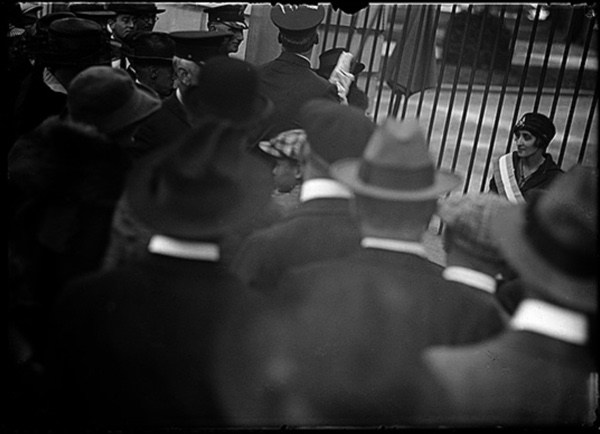After two years of working with NAWSA, Paul realized her ideas differed from theirs. The NAWSA focused on state-to-state campaigns while she sought to protest to Congress. This led her to co-found the Congressional Union for Woman Suffrage with Lucy Burns, another female activist.
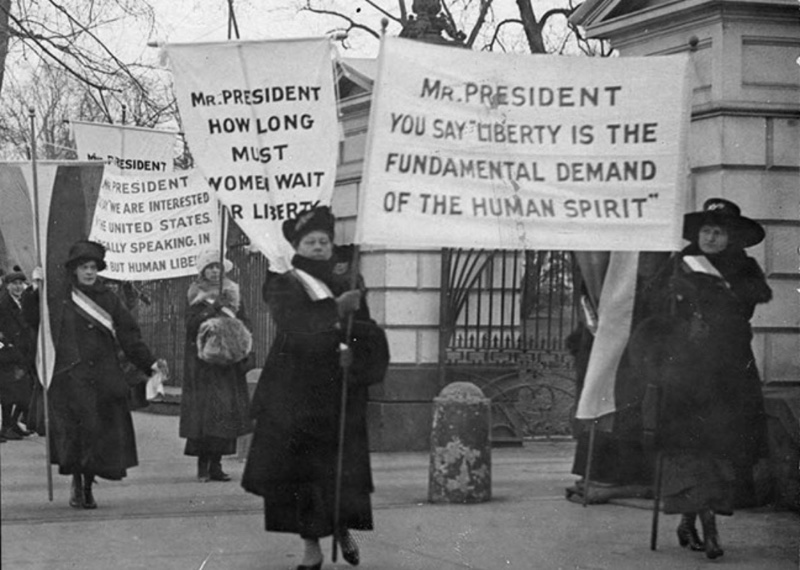
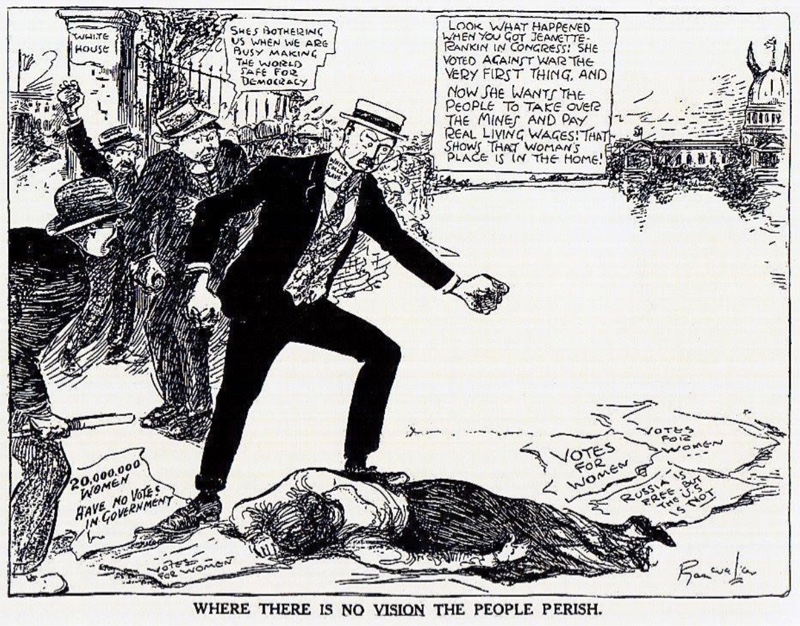
The picketing strategy really unfolds over quite a long time
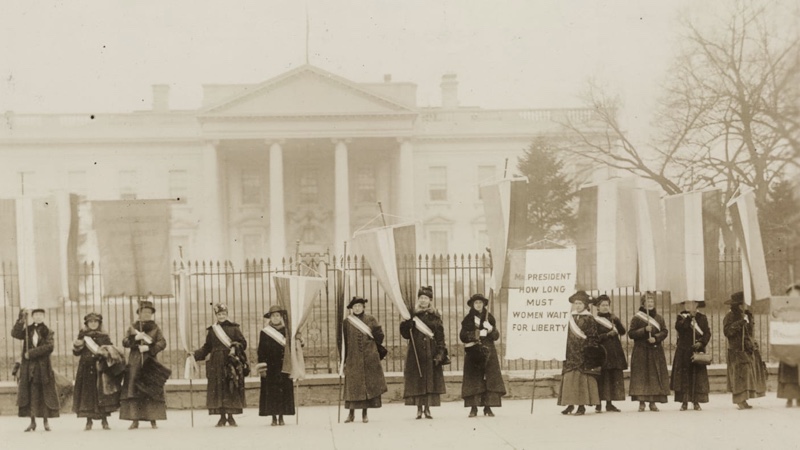
One of the things that we need to give them credit for is that they knew, after June, that when they were on the picket line they could be arrested, and they could go to jail
Members of Paul’s union were called “Silent Sentinels,” and they directed their efforts toward protesting in front of the White House. The “Silent Sentinels” took a different approach when it came to protesting: they didn’t speak. They held vigils for two years, demonstrating with banners while being beaten and arrested.
When all suffrage controversy has died away it will be the little army of women with their purple, white and gold banners, going to prison for their political freedom, that will be remembered.
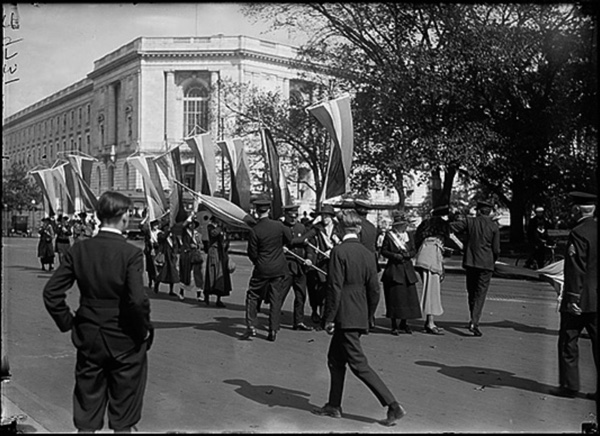
We shall fight for the things which we have always carried nearest our hearts—for democracy, for the right of those who submit to authority to have a voice in their own governments.
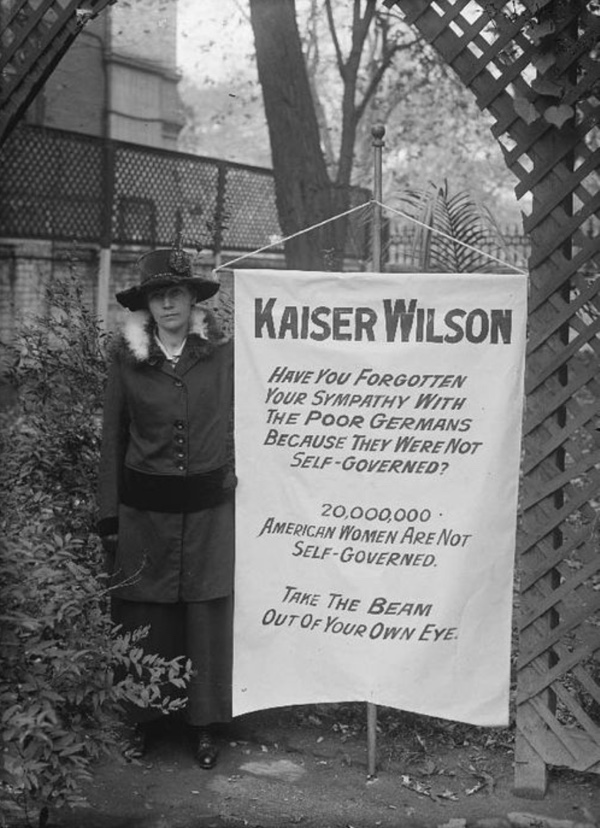
Kaiser Wilsonprotest banner. Library of Congress.
